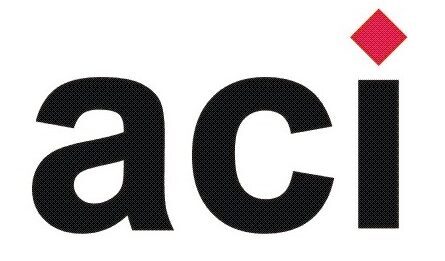- Papers must not exceed 5000 words in length (2000 words for work in progress papers), including abstract, figures, references and appendices. If you have not already done so, please send a short biography of up to 50 words of the presenting author in a separate document, with a photograph if possible.
- Before submitting your paper please ensure that it has been carefully read for typographical and grammatical errors. If English is not your first language, please have your paper proof-read by an English speaking person. Papers will be returned if the standard of English is not considered to be good enough for publication.
- Papers should submitted as a .doc or.rtf attachment by email to the conference manager. The email address is given on the conference call for papers and is also on the style guidelines sent to authors by email.
- Papers must not be sent in PDF format and should not be zipped.
- Papers can be produced in any PC or MAC version of Microsoft Word using Calibri font 10 pt for the main text.
- Set the pagesize to A4 with margins of 2.54cm all around. Please do not insert headers, footers or page numbers. Do not refer to page numbers in your text as these will be changed.
- Do not use multiple columns.
- Put the title of the paper in bold, left aligned, at the top of the first page only..
- Then, on the next line put the names of the authors. Where all authors are from the same institute, the following format should be used.
Lead Author, Co-author One, Co-Author Two Institute, Town, Country leadauthor@email.com co-authorone@email.com co-authortwo@email.com
Multiple authors from different institutions should appear as:
Andrew Nonymous1, Second Author2 and Third Author1 1The department, faculty and name of institute, Town, Country 2The department, faculty and name of institute, Town, Country leadauthor@email.com co-authorone@email.com co-authortwo@email.com
All author details will be removed before the review process.
- A 300 word abstract should follow.
- Include up to 6 keywords or phrases
- Do not use more than three levels of heading and use the numbering convention:
1 Heading 1
1.1 Heading 2
1.1.1 Heading 3
- The main body of the text should be in Calibri 10 point, single spaced and fully justified. Please use normal capitalisation within the text and do not use bold face for emphasis. Italics are acceptable. All headings should use initial capitals only, excepting for use of Acronyms
- You can include bulleted or numbered lists.
- Figures and tables should be placed as close to their reference point in the text as possible. All figures and tables must have titles and must be referenced from within the text. Avoid colour diagrams as the proceedings will be printed in black and white. Images must be inserted as picture files (.gif, .jpg, .bmp, .pct, .png, .psd). You may be asked to supply the pictures as separate files.
- Please avoid the use of footnotes. Endnotes are not permitted and papers containing them will be returned.
- References should follow the Harvard referencing style, which means that primary references in the text should be in the format (Nugus 1999) and should then be listed at the end of the paper as per the following examples:
Brooks, I. and Weatherston, J. (1997) The Business Environment: Challenges and Changes, Prentice Hall, London.
Brown, S.L. and Eisenhardt, K.M. (1998) Competing on the Edge: Strategy as Structured Chaos, Harvard Business School Press, Boston.
Clutterbuck, D. and Crainer, S. (1990) Makers of Management: Men and Women who Changed the Business World, MacMillan, London.
Conner, D.R. (1998) Leading at the Edge-of-chaos: How to Create the Nimble Organization, John Wiley, New York.
Doherty, Noel and Delener, Nejdet. (2001) “Chaos Theory: Marketing and Management Implications”, Journal of Marketing Theory and Practice, Fall, Vol 9, No. 4, pp 66–75.
Dolan, S.L., Garcia, S. and Auerbach, A. (2003) “Understanding and Managing Chaos in Organisations”, International Journal of Management, Vol 20, No. 1, pp 23–35.
Evans, D. (1998) The arbitrary ape, New Scientist, Vol 159, No. 2148, 22 August, pp 32–35.
Farrell, W. (1998) How Hits Happen: Forecasting Predictability in a Chaotic Marketplace, Harper Business, New York.
Fitzgerald, L.A. and van Eijnatten, F.M. (1998) “Letting Go For Control: The Art of Managing the Chaordic Enterprise”, The International Journal of Business Transformation, Vol. 1, No. 4, April, pp 261-270.
Goldberg, J. and Markoczy, L. (1998) “Complex Rhetoric and Simple Games”, [online], Cranfield University,www.Cranfield.ac.za/public/cc/cc047/papers/complex/html /complex.htm.
McElwee, M. (1998) “Chaos Theory and Complexity as Fountainheads for Design of an Organization Theory Building Workshop”, Paper read at XIVth World Congress of the International Sociological Association, Montreal, Canada, July.
- Secondary references would appear in the text as “Nugus (in Remenyi 1999: 25) …” and only the Remenyi work would be listed at the end of the paper. Further information on the Harvard referencing style can be found at: https://www.edgehill.ac.uk/ls/uni-skills/referencing/
- Secondary references would appear in the text as “Nugus (in Remenyi 1999: 25) …” and only the Remenyi work would be listed at the end of the paper. Further information on the Harvard referencing style can be found at: https://www.edgehill.ac.uk/ls/uni-skills/referencing/
Proofreading services
- ensure the spelling, punctuation and grammar of your work is correct,
- advise on the layout of the document,
- check for adherence to the rules of submission for the intended journal or conference, including referencing,
- use Track Changes to allow you to view the changes that are required.
